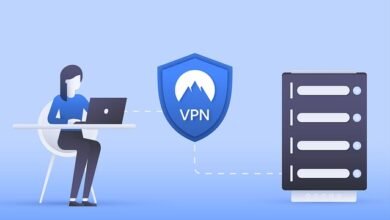How do you create a multi-cloud solution?


How do you create a multi-cloud solution?
There’s a lot of talk about cloud diversity, segmentation, and multifaceted differentiation…but we really need to know what kind of metric the market is using to determine how far the cloud revolution has come — and how should we approach multicloud deployment at all?
Companies use cloud computing. In fact, most enterprise organizations (as well as small and medium businesses) benefit from the flexibility and control that service-based computing and the supporting data functions provide for the use of more than one type, variety, or instance of cloud computing.
Of course, we are talking about a multi-cloud type of cloud. This is the deployment of services from more than one cloud service provider (CSP), which can generally mean choosing different cloud enhancements from each CSP.
Check also:
However, this is not a story about “what are the differences between clouds?” – This story has already been told extensively; We can already read all about public, private, hybrid, multi, poly, and armadillo clouds. Spoiler alert: There is no warship cloud, please don’t look for it, at least not yet.
Let’s go. We need to know what kind of metric the market is using to tell us how far the cloud revolution is going and how should we approach multi-cloud solutions at all?
multi cloud meter
SaaS cloud specialist Wanclouds, like many other companies, points to public cloud computing trends. The company is an executive partner of AWS, Google Cloud, and IBM Cloud, and has used its industry expertise to develop a “2022 Cloud-Native Trends Outlook”, conducting a survey in the fourth quarter of 2021 among 416 IT decision-makers from the United States America and Great Britain.
Wanclouds reports that 84% of IT decision makers admit using more than one cloud platform today. Most often they say they use two (29%) or three (19%) cloud platforms.
Of course, the multi-cloud approach has many advantages. First and foremost, companies can focus on leveraging the best cloud environment to meet the specific needs of each workload. But perhaps the most common reason cited by IT chiefs is to avoid relying on the vendor.
Multiple cloud problem
However, to say that two-thirds, three-quarters, and in this case 84% of companies are using multiple clouds, is neither progressive nor revolutionary. We know that. It can be helpful to know the domino effect of a multicloud ‘must’.
Faiz Khan, CEO of Wanclouds, explains that many of the clients he spoke to are building multiple and hybrid cloud environments, but increasingly face longer project lead times and the need for larger budgets. Most companies typically report that it takes 1-2 months for a single application to migrate to the cloud, but for a multicloud, the same migration process takes up to six months. In the latter scenarios, the more complex scenarios, the post-migration cloud cost spiral and confusion about the complexity of the billing system are common. “Our team regularly hears about unexpected cloud cost difficulties from organizations of all sizes and industries,” Khan said.
“IT teams are feeling powerless due to hidden fees and a lack of cloud visibility across the company in the billing systems for their platforms. This new data shows the prevalence of these issues and suggests that cloud service providers still have a long way to go to provide users with an experience that meets the changing needs of their customers,” added the CEO Wanclouds.
Transform cloud migration
At the risk of using too many technical terms in one sentence, it seems clear that the move to the cloud needs to change.
Of course, it is difficult to decide on the implementation of a multicloud cloud strategy. From deciding to travel towards the cloud, to identifying requirements, and laying the foundations, to defining and deploying applications and services in the cloud environment, the process requires robust strategy and flawless execution to be successful.
That’s the view of Hamilton Yu, CEO of Taos, a cloud migration and application update company currently operating under the IBM umbrella. “Despite the growing popularity of cloud strategies, it is seen as a good option rather than a business transformation option,” Yu said. “The benefits of such an implementation far outweigh any concerns the organization might fear. However, it is important to plan and carefully consider your options to make the most of a multicloud environment.
Taos’ team of consultants says a true multicloud environment is designed so that applications and services are deployed across a variety of resources using an existing network for intersite routing.
As we’ve already suggested, this deployment format allows organizations to take advantage of the strengths of various cloud computing service providers to meet the needs of a specific dataset or application. It also enables companies to choose between cloud locations for better performance, geographic residency requirements, or business continuity.
In fact, multi-cloud often helps to avoid resource dependency, so how do we do that?
7 steps to multicloud
Yu and his team outline seven steps to transitioning to a multicloud that can help companies in any industry move forward. In short, it can be summarized as follows:
• Rationalize Requirements – Gather both business and technology requirements and then develop a decision tree considering which CSP can solve each requirement.
• Establishing Connectivity – Before deploying an application or service for the first time, develop a global network strategy to manage connectivity between the cloud.
• Active Insight – Design solutions that work across the cloud to provide security insight by using scanning tools to identify incorrectly configured cloud resources and services.
• Good Governance – Building a management system to bring consistency and order to an otherwise unregulated environment.
• In-depth Training – Not every administrator will know all of the cloud, so be sure to offer training to manage the entire multicloud environment regardless of skill limitations.
• Full Automation – When automating your multi-cloud deployments, insist on tools that work across all cloud computing service providers, such as Terraform, that provide a consistent mechanism for infrastructure deployment and service delivery.
• Schedule Overview – Work closely with your finance team to analyze the total cost of implementing a multi-cloud strategy and decide what comes first.
Hasty implementation of the cloud computing strategy will lead to inefficiency, rework and, in some cases, complete replacement of the work done.
The above seven points list may not be a comprehensive and safe checklist that applies to any cloud travel once it takes off, but it is probably a good set of pillars on which to start our journey into the world of the cloud.
Source: IDG Connect
.



